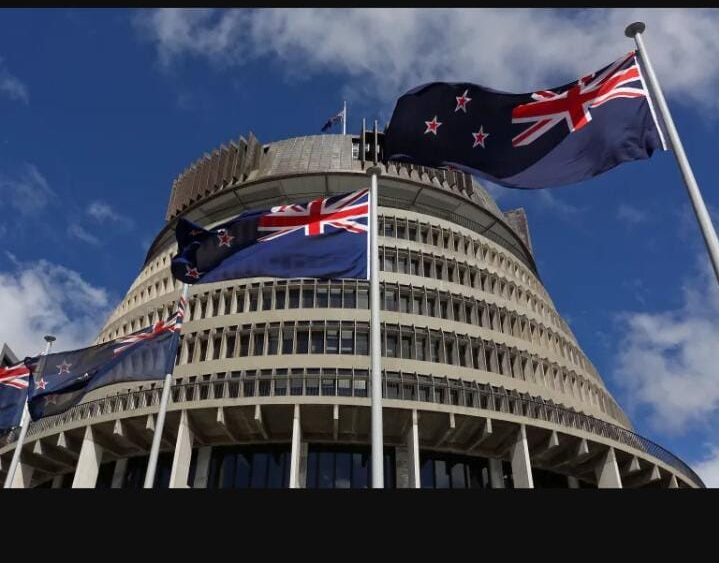
Since the start of Russia’s full-scale invasion of Ukraine in 2022, several military offensives have taken place on both sides. The conflict, rooted in complex historical and geopolitical tensions, has had significant humanitarian, economic, and military impacts, leading to substantial changes in the region and affecting global affairs. This article will provide a detailed analysis of the current offensive in Ukraine, breaking it down into key aspects and developments.
Background of the Conflict
Ukraine and Russia have a long and contentious history, dating back to centuries of regional politics. The current conflict can be traced to Russia’s annexation of Crimea in 2014 and its support of separatist movements in Ukraine’s Donbas region. After years of skirmishes, the situation escalated dramatically in February 2022, when Russia launched a full-scale invasion of Ukraine. Western nations condemned the invasion and supported Ukraine with military aid and sanctions against Russia.
Key Players in the Conflict
Ukraine: Led by President Volodymyr Zelensky, Ukraine has been fiercely defending its sovereignty. Supported by Western military aid and diplomatic backing, Ukrainian forces have continued to resist despite significant losses.
Russia: Under President Vladimir Putin’s leadership, Russia has pursued aggressive military strategies, with aims to control strategic regions in Ukraine. Putin’s government views Ukraine’s Western alignment as a threat to Russian influence in the post-Soviet sphere.
International Support: The U.S., NATO, and the European Union have provided military, economic, and humanitarian aid to Ukraine. However, direct military intervention by Western forces has been avoided to prevent further escalation.
Ukraine’s 2023 Counter
offensiveIn mid-2023, Ukrainian forces launched a major counteroffensive to reclaim territories occupied by Russia, primarily focusing on the eastern and southern regions, including Zaporizhzhia, Kherson, and Donetsk. This offensive, backed by Western-supplied arms such as HIMARS rocket systems and modern tanks, aimed to push back Russian troops and cut off their supply lines.While Ukraine made some significant advances, particularly in retaking key villages and towns, the offensive has been slower than expected. Russian forces, deeply entrenched, employed heavy artillery, minefields, and air support, stalling Ukrainian progress in several regions.
Russia’s Defensive Tactics and Offensives
Russia has responded to Ukraine’s counteroffensive with intense defensive measures, fortifying its positions with trenches, mines, and reinforcements. Simultaneously, Russian forces have launched their own offensives in areas like Bakhmut and Avdiivka, aiming to wear down Ukrainian defenses and force attrition.Russia’s tactics include heavy use of artillery and missile strikes on Ukrainian civilian and military targets. Drone warfare, particularly the use of Iranian-made Shahed drones, has also been a key feature of Russia’s strategy, attacking Ukraine’s infrastructure, energy grid, and cities.
Humanitarian Impact
The ongoing offensive has had devastating consequences for civilians. Thousands have been killed, millions displaced, and cities left in ruins. In cities like Mariupol and Bakhmut, civilian infrastructure has been decimated, with the humanitarian situation becoming dire. International organizations, including the UN and Red Cross, continue to provide aid, but access to conflict zones remains challenging.Additionally, the influx of refugees into neighboring European countries, such as Poland and Germany, has created a humanitarian crisis, with the international community struggling to accommodate the growing number of displaced people.
Geopolitical and Economic Consequences
The war in Ukraine has had far-reaching geopolitical implications, reshaping alliances and global energy markets. Europe’s dependency on Russian gas has been a critical factor in the conflict, with the EU making efforts to reduce this reliance by seeking alternative energy sources. The conflict has also accelerated NATO’s expansion, with Sweden and Finland joining the alliance as a direct response to Russian aggression.Economically, the war has caused global disruptions in grain supplies, particularly affecting countries in Africa and the Middle East that rely heavily on Ukrainian and Russian wheat exports. Sanctions on Russia have led to increased energy prices and inflation in Europe, while Russia has shifted its energy exports to countries like China and India.
Role of Technology and Cyber Warfare
Technology has played a significant role in the Ukrainian offensive. Drones, precision-guided munitions, and intelligence-sharing with Western allies have provided Ukraine with the ability to strike Russian positions more accurately. On the other hand, Russia has continued its cyber warfare tactics, targeting Ukrainian infrastructure and Western institutions with cyber-attacks.Both sides have used propaganda and social media extensively to sway public opinion, often providing conflicting reports of victories and losses. The digital aspect of the war has made it difficult to verify information, adding another layer of complexity to the conflict.
Western Military Aid and Its Impact
The Western supply of military aid, particularly from the United States, NATO, and the European Union, has been instrumental in sustaining Ukraine’s military efforts. The provision of advanced weaponry such as tanks, artillery systems, and air defense systems has bolstered Ukraine’s ability to resist Russian advances and mount counteroffensives.However, there are concerns about the sustainability of this aid. Some Western nations, facing internal political pressures, are questioning the long-term costs of supporting Ukraine. The potential for “donor fatigue” could impact the future of the conflict, particularly if military assistance begins to dwindle.
Prospects for Peace
Despite multiple rounds of peace talks since the war began, a lasting resolution has remained elusive. Both Russia and Ukraine have set conditions for negotiations that seem incompatible, with Ukraine demanding the full restoration of its territorial integrity and Russia seeking guarantees that Ukraine will not join NATO.
Diplomatic efforts, particularly by countries like Turkey and the UN, have focused on smaller victories, such as negotiating grain export deals and prisoner exchanges. However, a comprehensive peace settlement appears distant, with both sides continuing to prepare for a prolonged conflict.
The offensive in Ukraine continues to evolve, with both sides digging in for a long and drawn-out conflict. While Ukraine has made some strategic gains, the war has reached a stage of attrition, where neither side is capable of delivering a decisive blow. The international community remains divided on how to bring about peace, and the human, economic, and geopolitical costs of the war are mounting.
The path forward is uncertain, but it is clear that the offensive in Ukraine will continue to shape the regional and global landscape for years to come.
Subscribe to Follow Global Trends for daily global news.
Find Out How To Make Money As A Full Time Writer/Blogger Guide.
To Advertise, Advertise Your Affiliate Links on FollowGlobalTrends.com for Just $1 Per Link Per Month!
Related articles
Israel’s War on Gaza Live: Israeli Attacks Kill 68 in 24 Hours
Israel’s War on Gaza: Live Updates on Israelis in Cairo as US Says Truce in Sight
Israel’s War on Gaza Live: Truce Still Elusive as Israeli Attacks Kill 52
Brief: Israel War on Gaza Live: No Letup in Israeli Attacks Ahead of Truce Talks
Written by: Enyoghasi Ngozi pricillia

